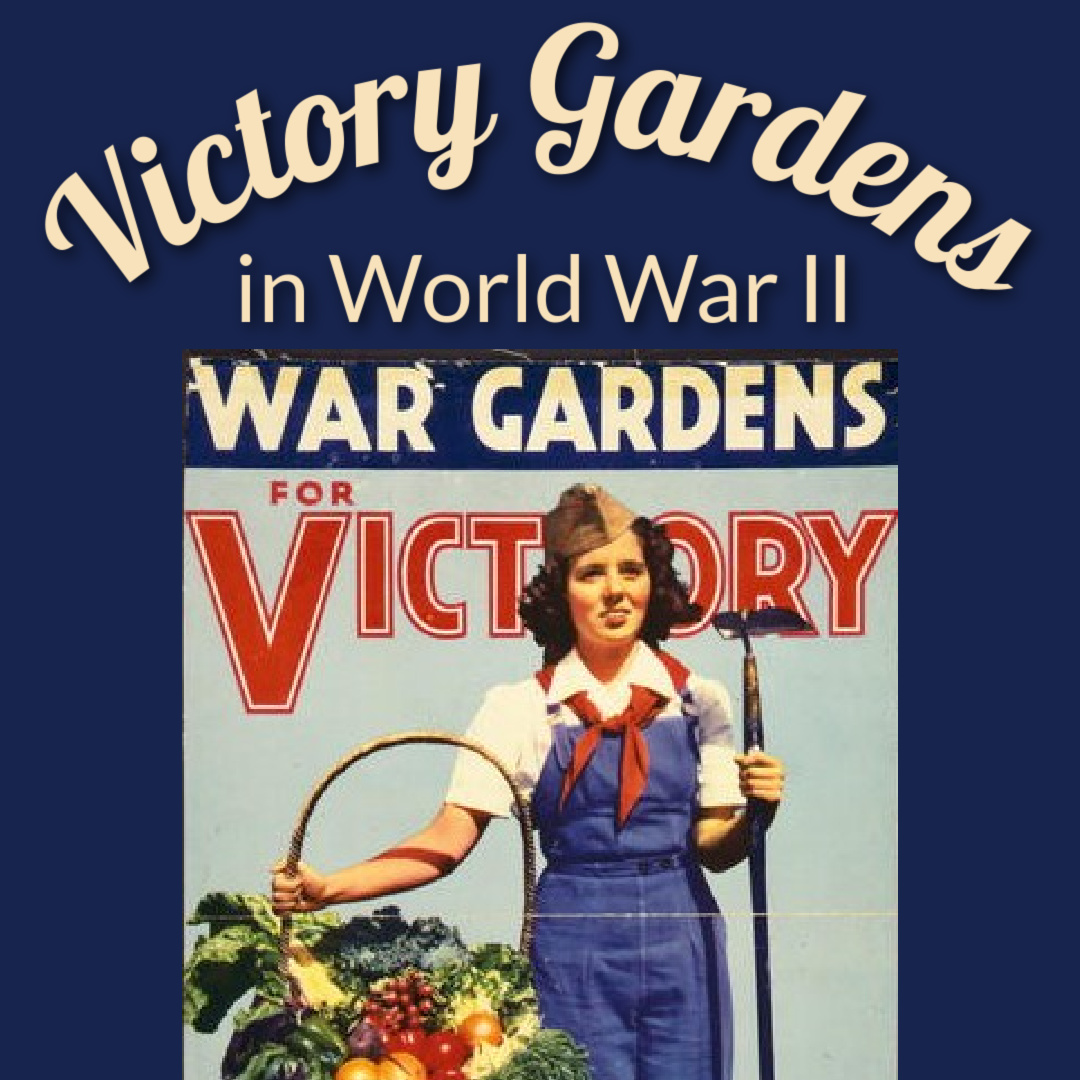Victory Gardens in World War II
For the average American in World War II, the Victory Garden was a practical way to contribute to the war effort. Some 20 million Victory Gardens were planted (US population in 1940 was 132 million), and by 1943, these little plots produced 40 percent of all vegetables consumed in the US. It’s estimated that 9-10 million tons of vegetables were grown. The Need for Victory Gardens Wartime needs stretched agricultural production. The United States not only had to feed its own civilian and military population, but many of the Allies relied on America’s bread basket. In addition, U-boats sank hundreds of food-laden ships bound for Britain. While the need expanded, the number of farm workers decreased due to the draft and – ironically – due to the internment of Japanese-Americans. Canned fruits and vegetables were rationed starting March 1, 1943, so civilians were encouraged to grow their own produce to supplement their rations. The use of fewer canned goods would decrease the use of precious tin and reduce the strain on the heavily taxed rail and road systems. The Victory Garden Program In December 1941, shortly after the United States entered World War II, Agriculture Secretary Claude Wickard began promoting Victory Gardens. The Department of Agriculture produced pamphlets to guide urban and suburban gardeners, magazines and newspapers published helpful articles, and patriotic posters urged participation. Neighborhood and community committees were formed with veteran gardeners guiding newcomers. These committees also helped with distribution of surplus food and sharing of equipment. Many garden tools were made of steel, which was in short supply, so sharing between families was encouraged. Who Could Participate? Victory Gardens were promoted as family fun, as good healthy … Continue reading Victory Gardens in World War II
